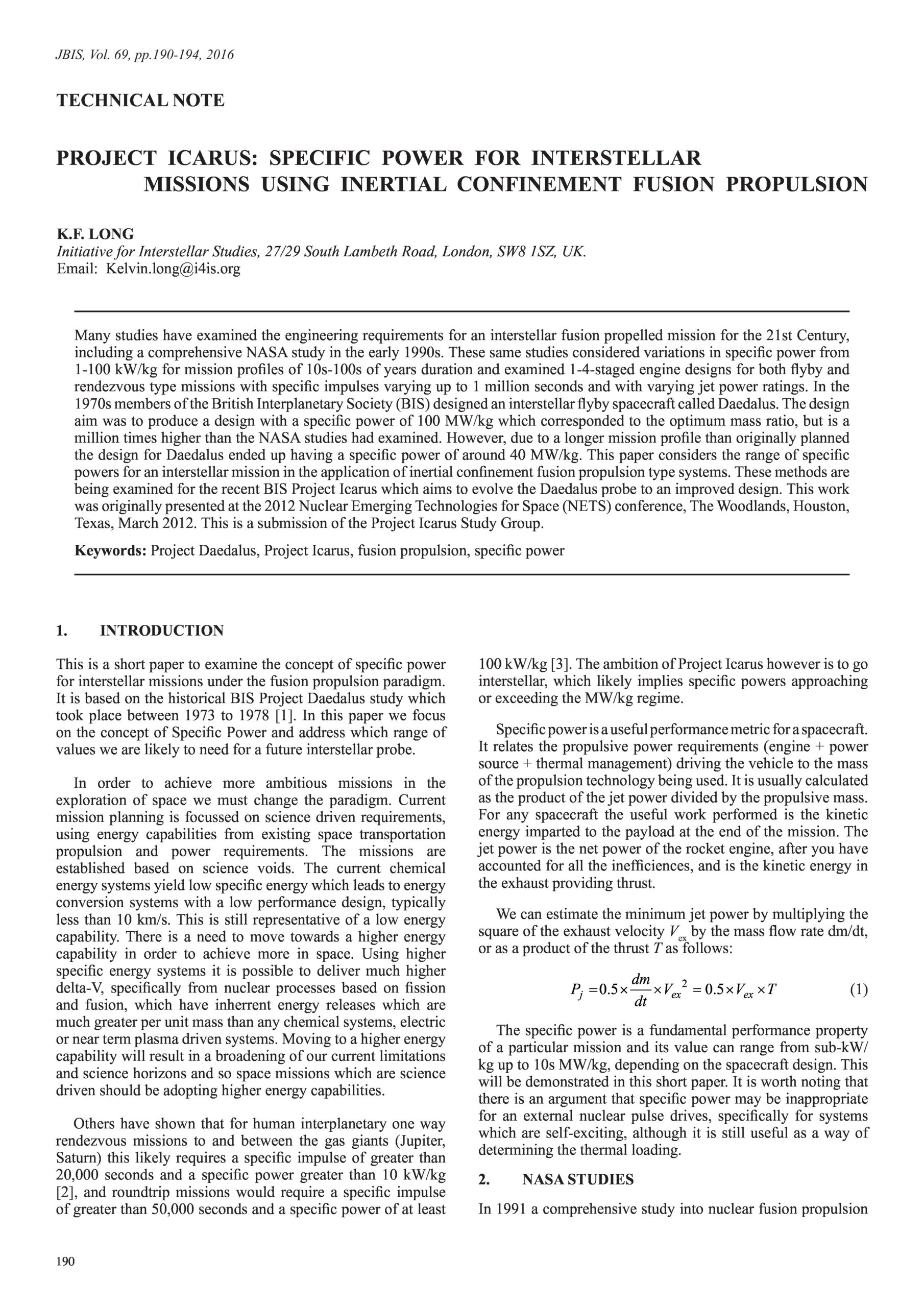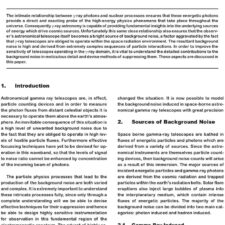Technical Note: Project Icarus: Specific Power for Interstellar Missions Using Inertial Confinement Fusion Propulsion
£5.00
K. F. Long (2016), JBIS, 69, pp.190-194
Refcode: 2016.69.190
Keywords: Project Daedalus, Project Icarus, Fusion propulsion, Specific power
Abstract:
Many studies have examined the engineering requirements for an interstellar fusion propelled mission for the 21st Century, including a comprehensive NASA study in the early 1990s. These same studies considered variations in specific power from 1-100 kW/kg for mission profiles of 10s-100s of years duration and examined 1-4-staged engine designs for both flyby and rendezvous type missions with specific impulses varying up to 1 million seconds and with varying jet power ratings. In the 1970s members of the British Interplanetary Society (BIS) designed an interstellar flyby spacecraft called Daedalus. The design aim was to produce a design with a specific power of 100 MW/kg which corresponded to the optimum mass ratio, but is a million times higher than the NASA studies had examined. However, due to a longer mission profile than originally planned the design for Daedalus ended up having a specific power of around 40 MW/kg. This paper considers the range of specific powers for an interstellar mission in the application of inertial confinement fusion propulsion type systems. These methods are being examined for the recent BIS Project Icarus which aims to evolve the Daedalus probe to an improved design. This work was originally presented at the 2012 Nuclear Emerging Technologies for Space (NETS) conference, The Woodlands, Houston, Texas, March 2012. This is a submission of the Project Icarus Study Group.





